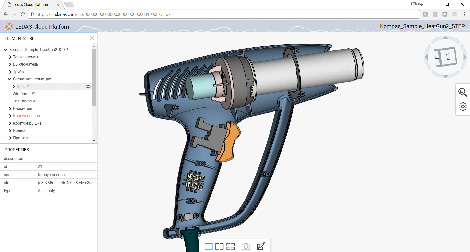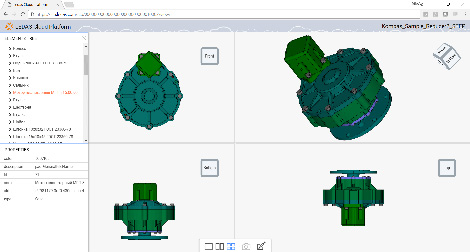
Ledas, a Russian provider of software development services for the likes of Dassault Systemes and Cimatron, has announced its Cloud platform has taken another positive step with the ‘smooth integration’ running C3D Labs‘ Toolkit in a web browser.
The move, states Ledas, shows that its 3D Web platform couples easily ‘with any general-purpose geometric modelling’, proving a step-up from its previous tests when coupled with an open-source B-rep geometric kernel and 3D modeling library.
This development was bridged with C3D to achieve better performance and quality for working with real-life user models.

The Ledas Cloud Platform (LCP) provides data storage and management, 3D visualisation, communication and collaboration by bringing them to users through web browsers, while also adding more complex and specific user functions, such as editing and analysing 3D models on the web.
“Using C3D is a big plus for us because it provides conversion between popular CAD formats, including STEP, IGES, X_T/X_B, SAT, and many mesh formats,” said Nikolay Snytnikov, the head of the LCP project at LEDAS. “It is not a big secret that reading/conversion/writing of CAD data between STEP and other formats can cause some things to be ‘lost in translation’, so, using a commercial kernel proven by many thousands of end-user customers is a big plus.
“Also, because of the strong and flexible architecture of LCP, the integration of the C3D kernel was done easily in a straightforward manner.”
The main functions that Ledas needs from a 3D kernel is to read and tessellate CAD data into triangular meshes, which are used on the browser side for visualisation, navigation, mark-up, and other user interactions.
By employing additional data structures, LCP states it maintains a map between triangular meshes and CAD data, and provides a bi-directional work flow between client and server.
Operations done by users on the client side trigger corresponding operations on server side, which modify the 3D model accordingly.
Once all operations are done, the CAD and mesh models are saved in users’ spaces on cloud data storage sites for sharing and later reuse.






